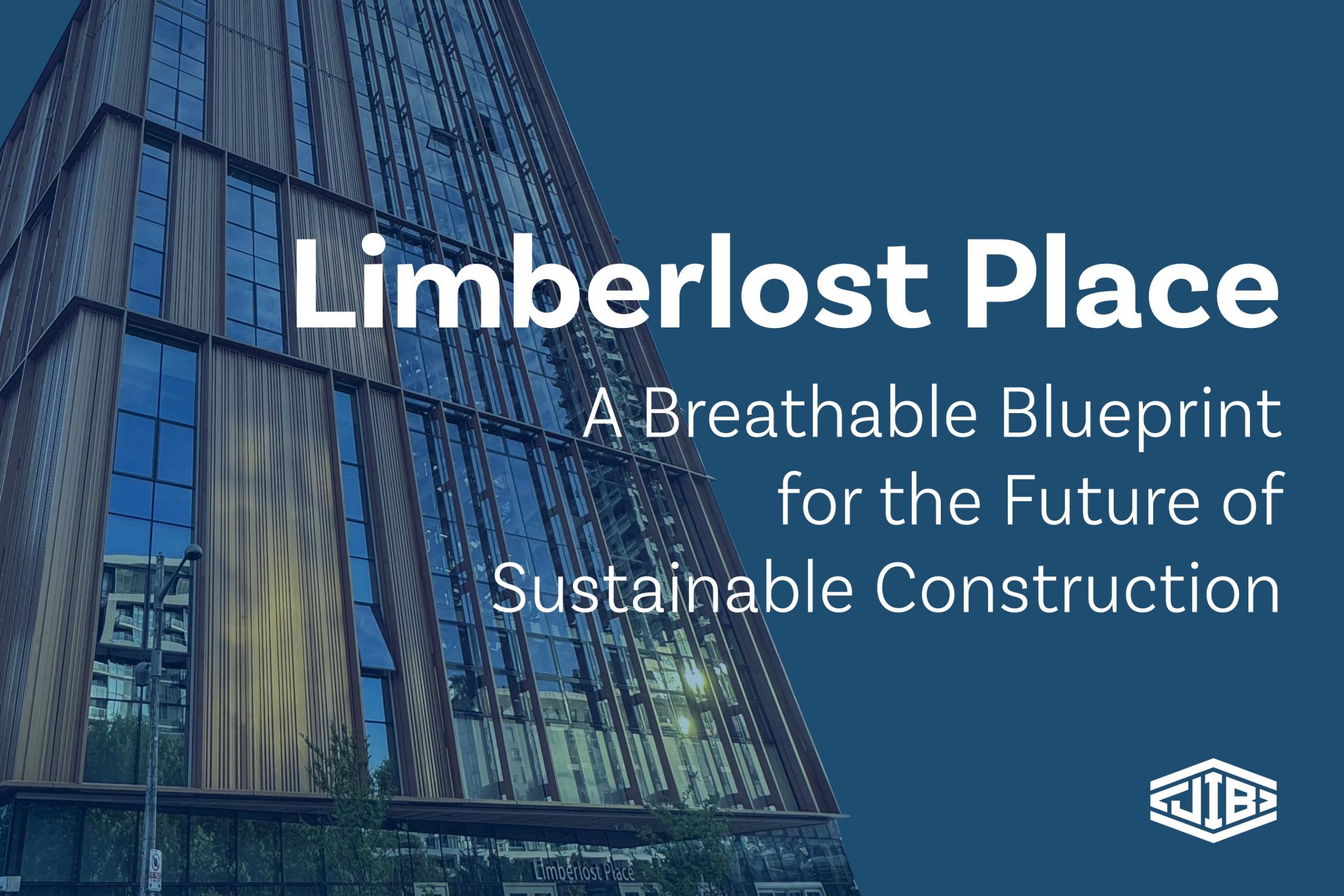When you first step into Limberlost Place, George Brown College’s new 10-storey academic building on Toronto’s waterfront, something unexpected happens: you inhale, and it smells like a forest.
Fresh air flows effortlessly through the structure. The warmth of exposed timber, the quiet hush of natural materials, and the clarity of sunlight bouncing off wood grain immediately signal that this is not a typical institutional building. Limberlost Place offers something new and hopeful.
I had the opportunity to tour the building and attend a presentation hosted by the Council on Tall Buildings and Urban Habitat (CTBUH). This project left a lasting impression, not only as a milestone in hybrid mass timber construction but also as a living, breathing example of how we can build differently.
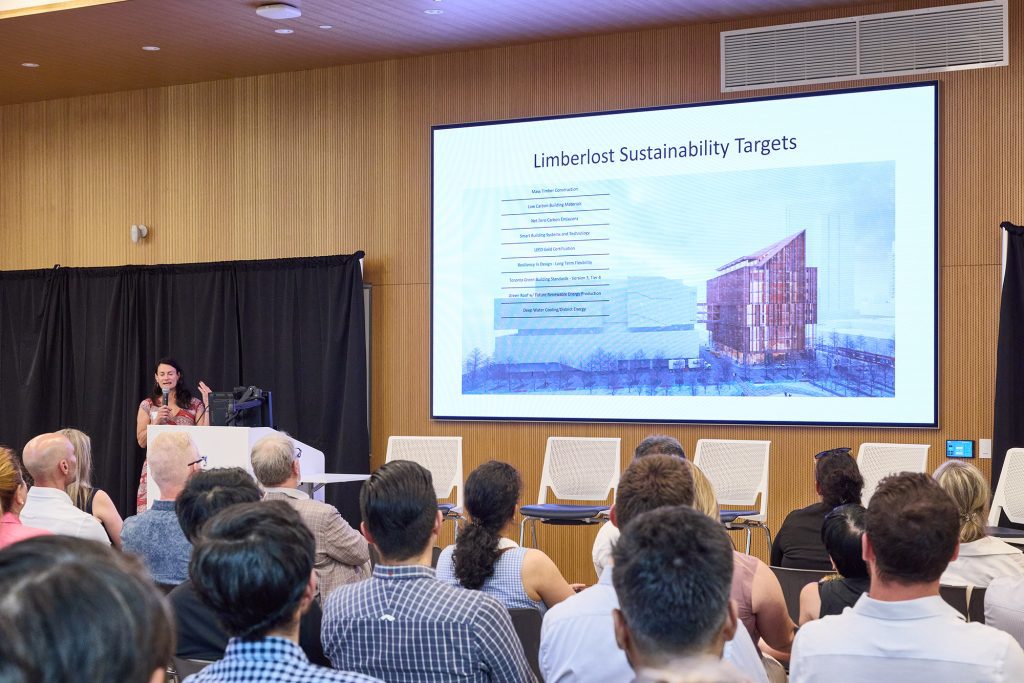
What Makes Limberlost Place So Remarkable?
Limberlost Place is Canada’s first institutional tall wood building. It also ranks among the most ambitious globally, blending mass timber, concrete, and steel into a hybrid structural system that challenges conventional thinking about performance, durability, and scale.
Here are some of the highlights:
🌿 Net-Zero Carbon by Design
- The building uses no fossil fuels on site. All heating, cooling, and ventilation are electrically powered.
- A deep-water cooling system draws from Lake Ontario to help regulate interior temperatures.
- Solar chimneys and operable windows enable natural ventilation.
- A rooftop photovoltaic array provides approximately 24 percent of the building’s energy needs.
- Collectively, these design choices are expected to avoid more than 5,400 tonnes of CO₂ emissions.
🪵 Timber Innovation at Scale
- The structure incorporates a timber-concrete composite slab system, engineered by Fast + Epp. This allows for long spans and beamless ceilings, which are ideal for flexible academic spaces.
- Some glulam columns rise more than three storeys high, making them among the largest in North America.
- A mass timber pedestrian bridge connects Limberlost Place with the existing Waterfront Campus.
🧠 A Living Lab for Learning
- The building houses the School of Architectural Studies, the School of Computer Technology, and the Brookfield Sustainability Institute.
- It is designed as a flexible teaching environment, with exposed structural elements, movable partitions, and beamless floors that give students a direct view of how the building functions.
- Integrated sensors monitor air quality, energy usage, and temperature, making the entire facility a real-time educational tool.
🤝 Community and Cultural Integration
- The facility also includes a fitness centre, Indigenous learning spaces, and Mary’s Place, a childcare centre.
- Named after Ontario’s Limberlost Forest and Wildlife Reserve, the building reflects a deep commitment to environmental stewardship and lifelong learning.
A Model for What Comes Next
Projects like Limberlost Place are changing the narrative in sustainable construction. This structure does more than meet climate goals on paper. It invites you to feel the difference. You can breathe it in.
As cities and institutions reimagine how to build for a lower-carbon future, Limberlost Place serves as a powerful model of what is possible when innovation, policy, and thoughtful design come together.
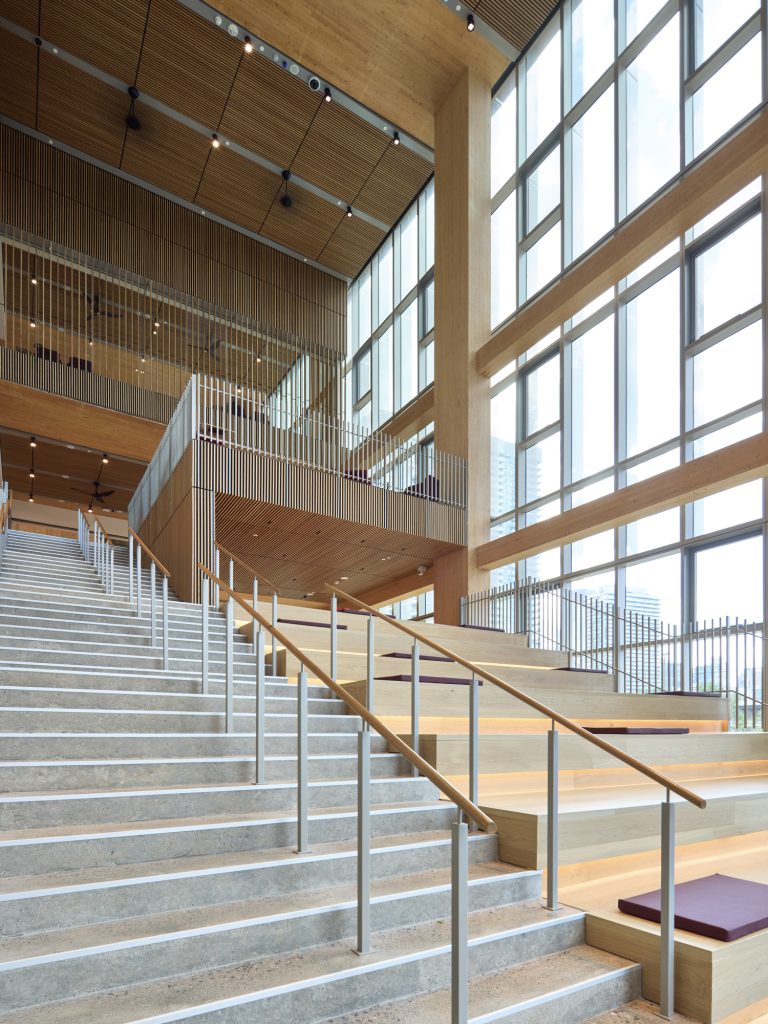
Project Team
This exceptional project was made possible through collaboration among:
- George Brown College (client)
- Moriyama Teshima Architects and Acton Ostry Architects (design)
- Fast + Epp (structural engineering)
- PCL (construction management)
- Transsolar (Environment Specialist)
Many thanks to CTBUH for organizing an inspiring and informative tour that brought this building to life in a whole new way.
Explore Limberlost Place
If you are passionate about sustainability, architecture, and the future of learning environments, Limberlost Place is well worth your attention. And your visit.
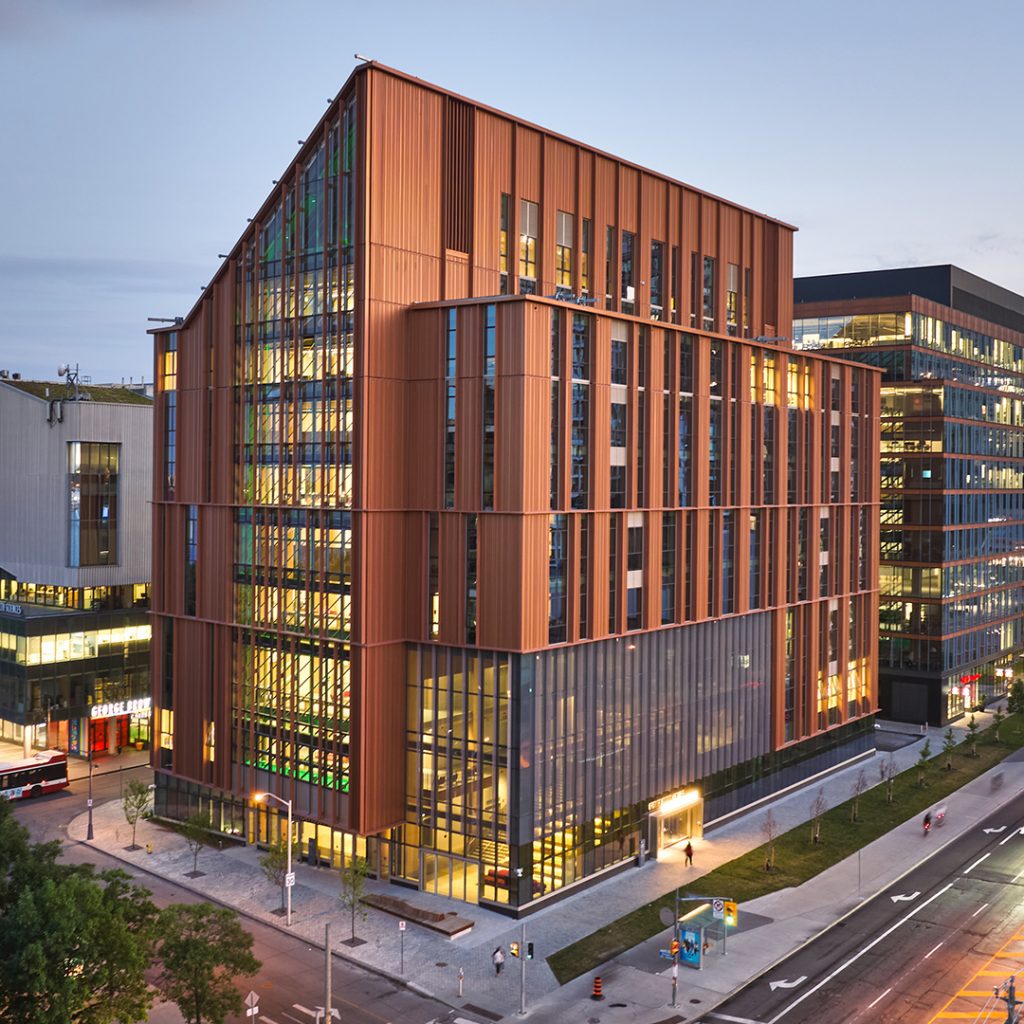
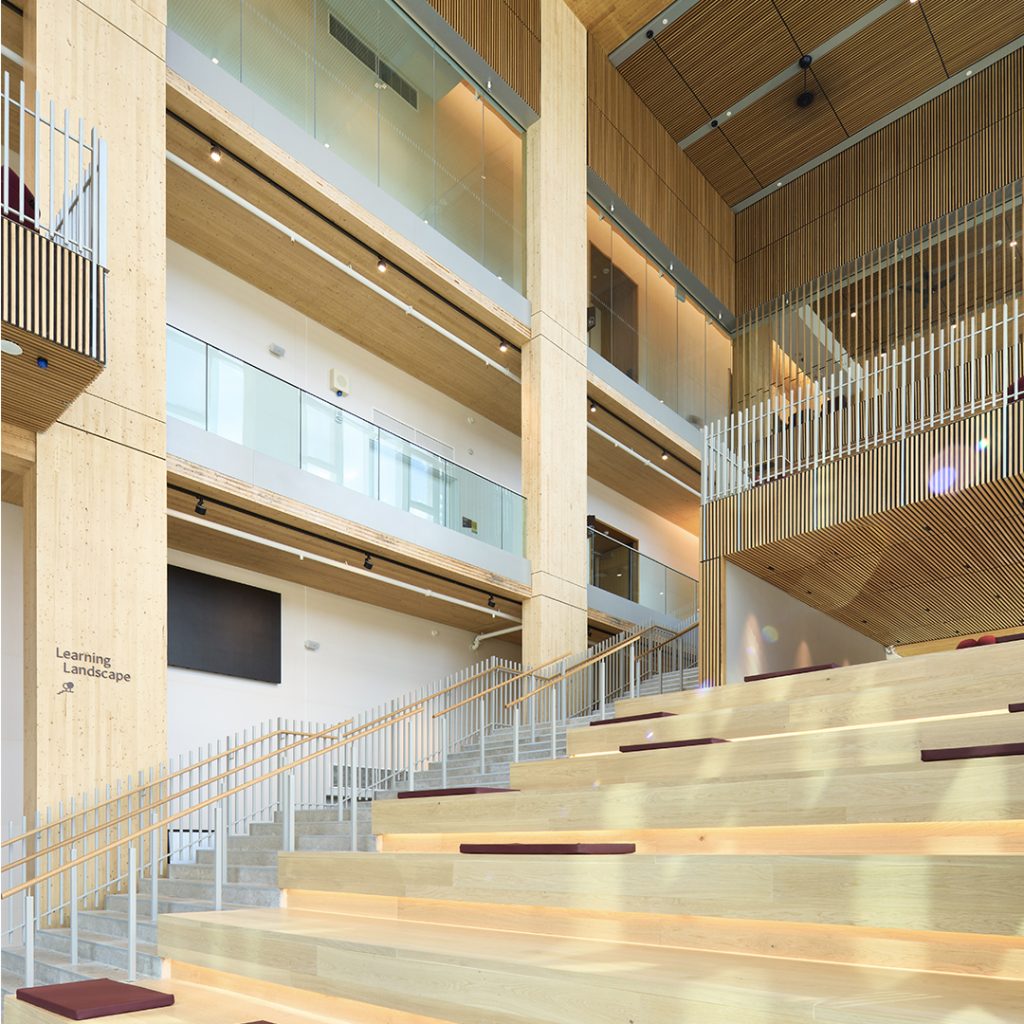
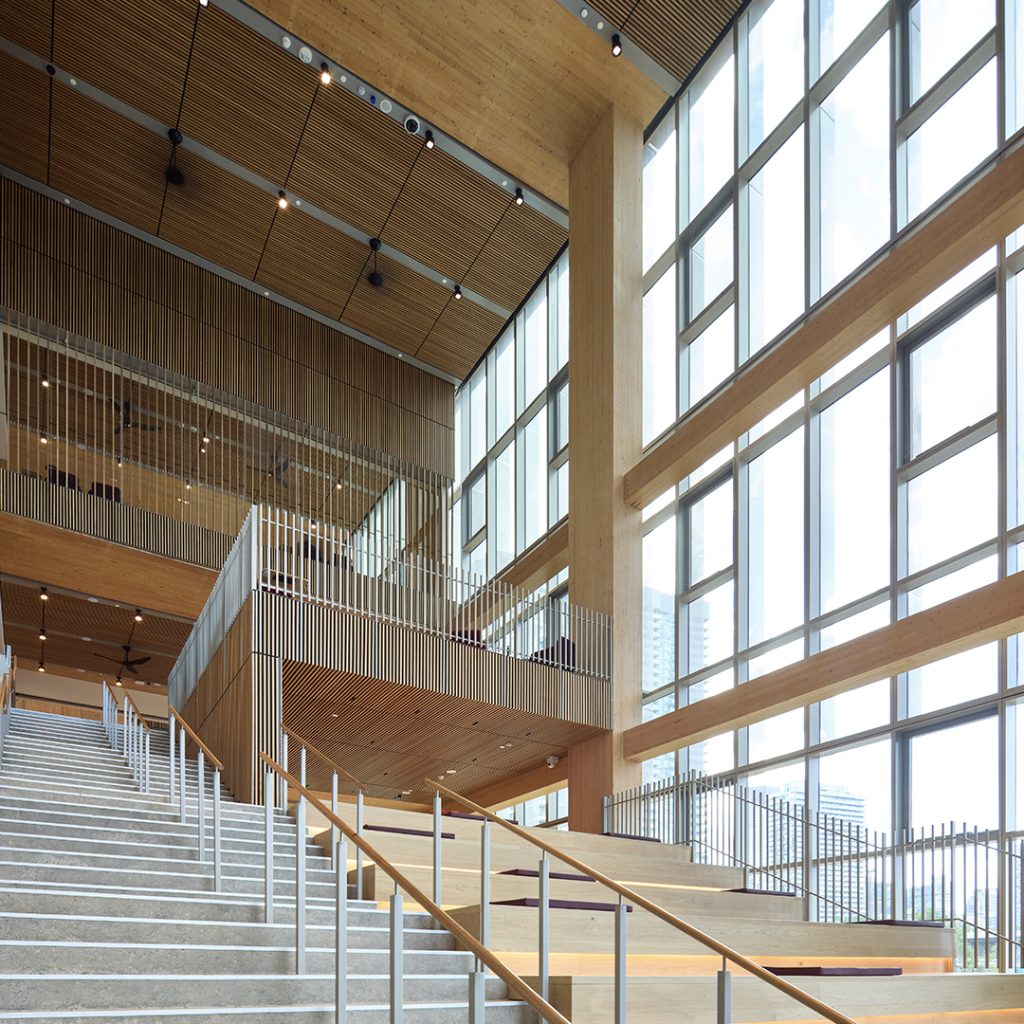
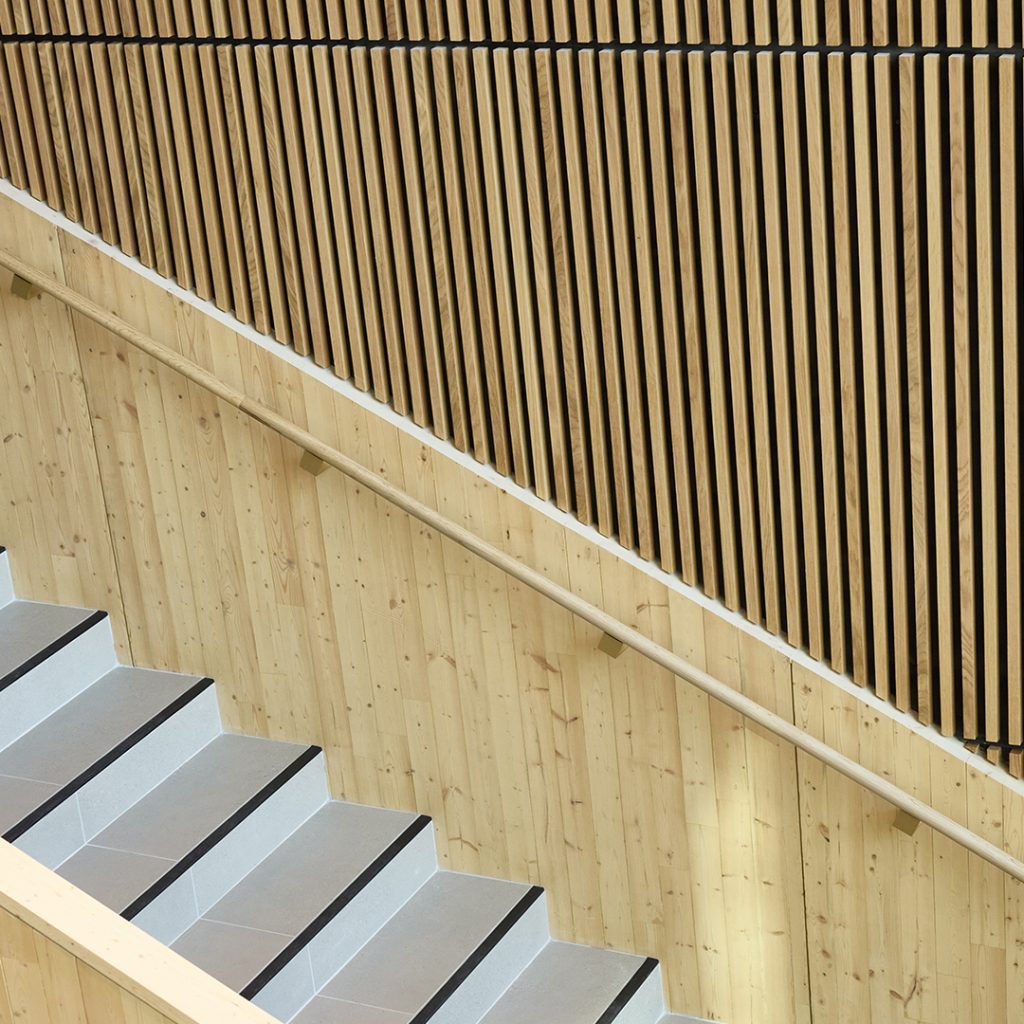
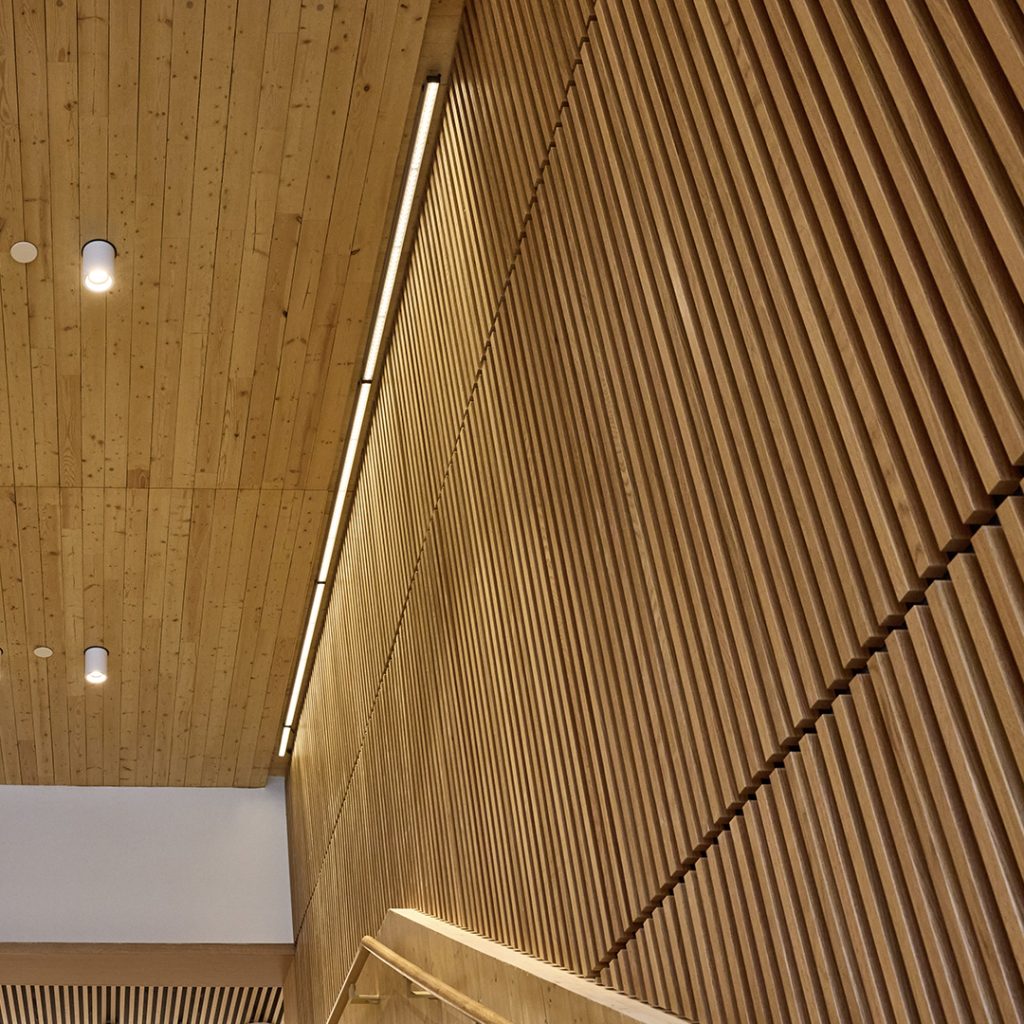
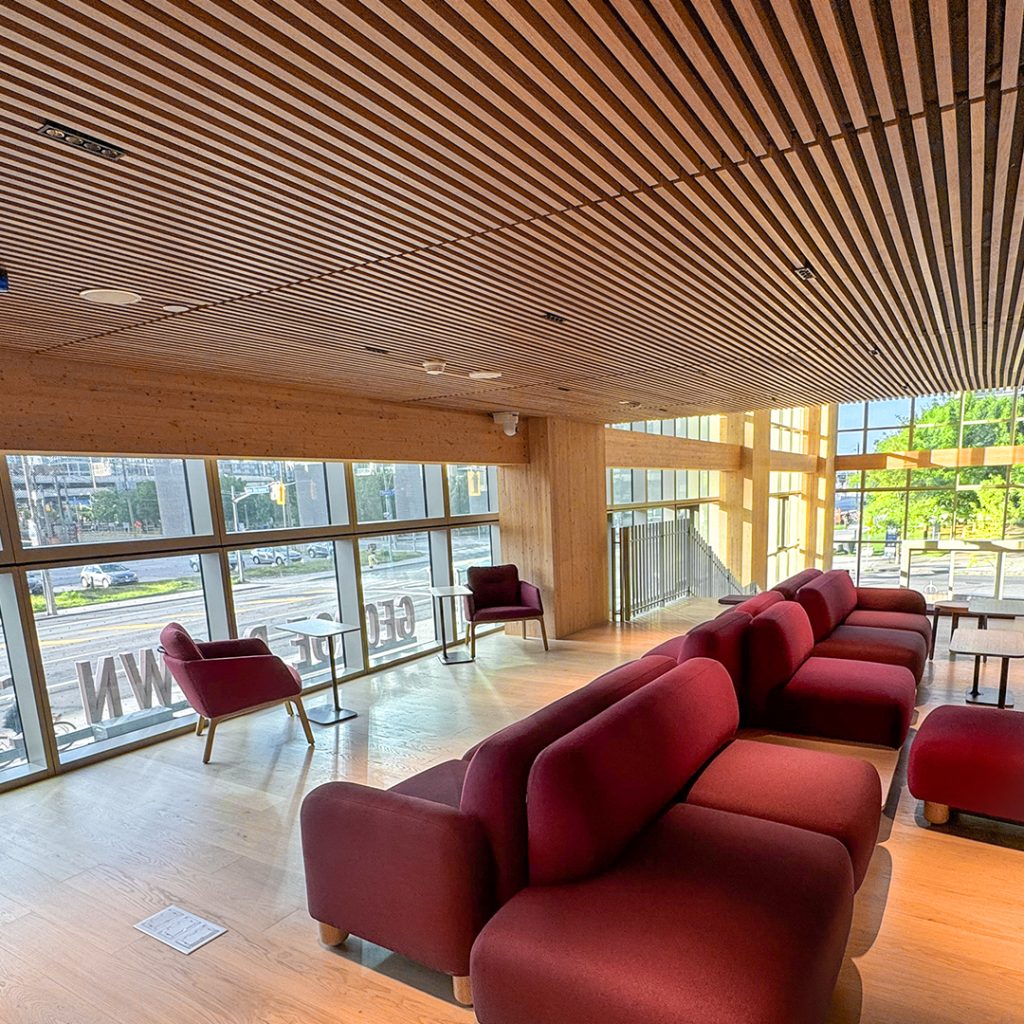
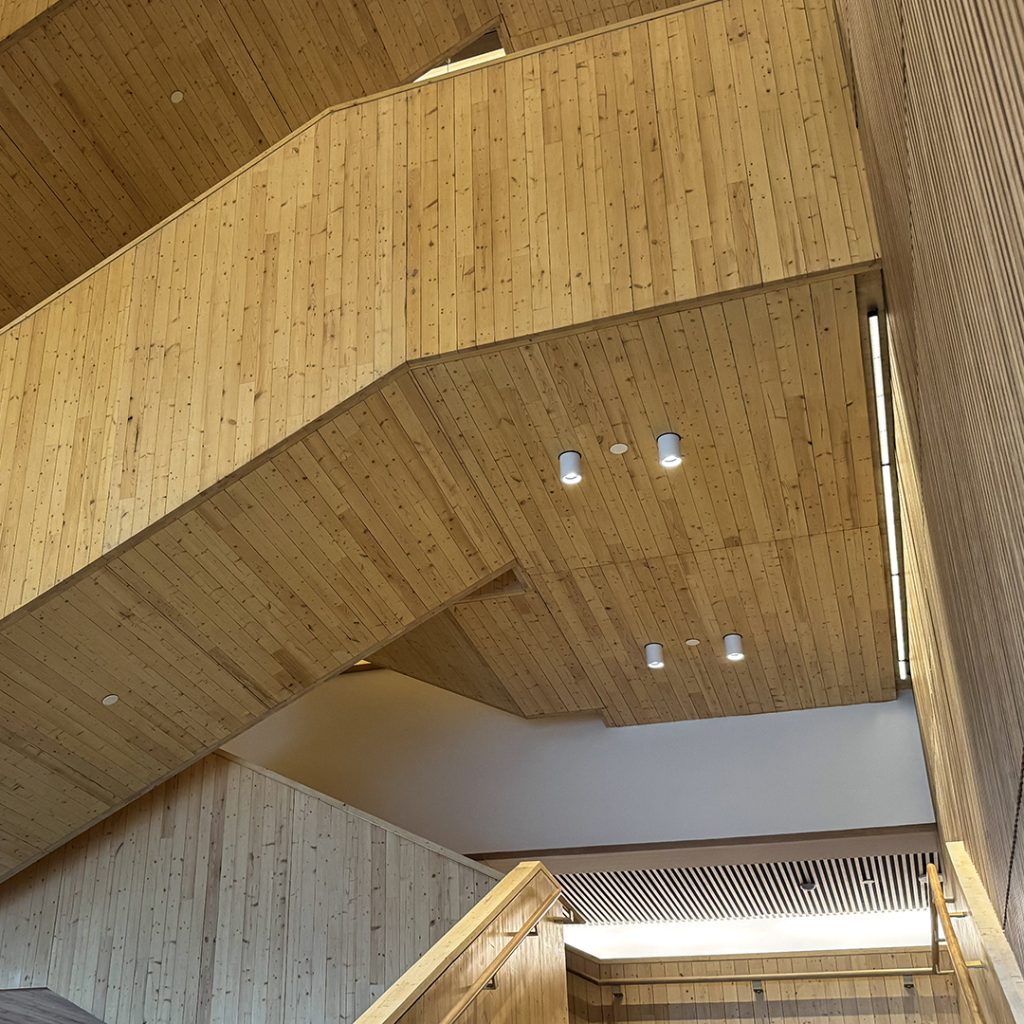
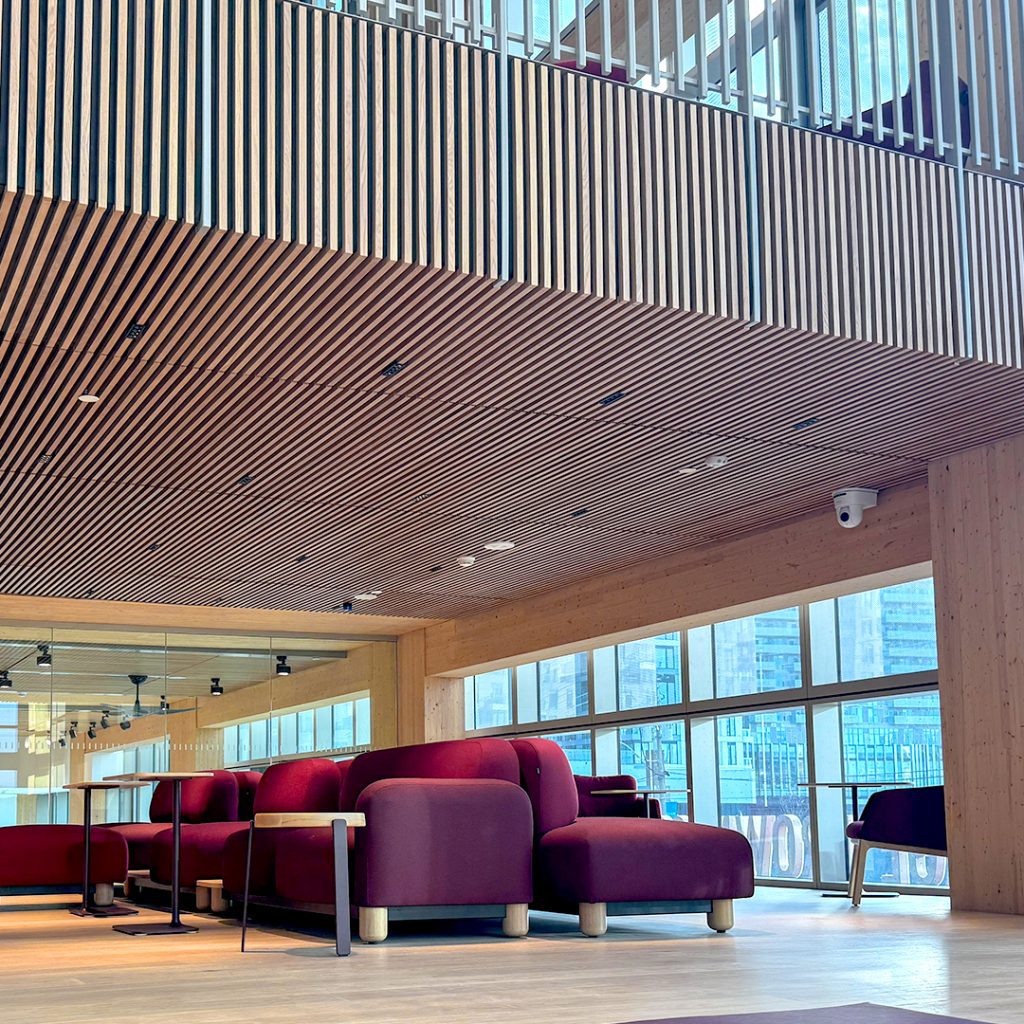
Wondering how storytelling and smart marketing can advance offsite construction, mass timber, and sustainability in North America?
Whether you’re in AEC, sustainability, or shaping the built environment, we’d love to connect. Let’s talk – or explore BuildBetter.Marketing.
Structure needs story. Jib delivers.






